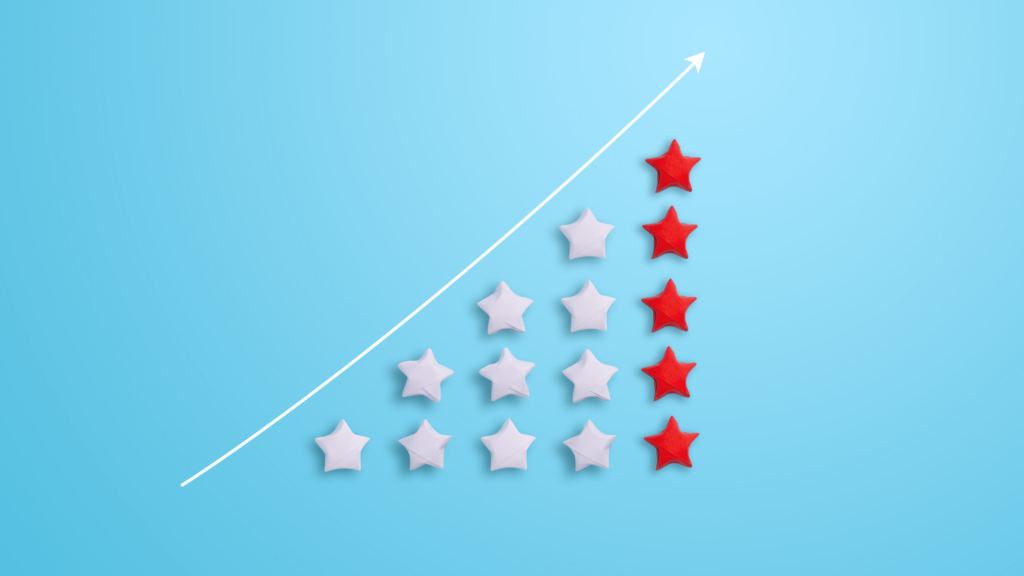As fundraisers, we tend to set ambitious goals for our fundraising programs. While ambitious goals are great, they’re usually set before we have had an opportunity to think about how we’re going to reach them. If your organization is anything like most nonprofits, then you are probably chasing the “new”. New donors, new revenue sources, new partners, that must be the secret to reaching your goals, right? Not necessarily.
Pursuing new donors is never a bad idea, but if we narrow in our focus on the new, we tend to forget what we have, yes, we mean donor retention. New donor acquisition can cost 50-100% more than donor retention, so while you might be running costly donor acquisition campaigns, your existing donors could be slipping away from you. Because of this, it’s critical for your organization to understand how you’re doing with donor retention and how to calculate your donor retention rate. This is the first step in turning your one-time donors into lifelong supporters and building a reliable and stable source of funding for your nonprofit.

Understanding Donor Retention Rates
Donor retention rate is a metric used to understand the percentage of your donors that continue to give to your organization during a specific time period. This information is useful to show how well you are retaining your donors and building long-lasting relationships so that they want to continue giving. In the nonprofit industry, the donor retention rate has been hovering between 40-50% for the past several years, meaning that it’s possible that your organization could be losing up to 60% of your donors every year. Not ideal, right?
The Importance of Donor Retention Rate for Nonprofits
In general, a high average donor retention rate means that more of your donors are returning year over year, which translates into a more secure revenue “safety net” for your organization.
A low average donor retention rate means that you’re losing a high volume of donors each year, which is likely leading you to invest more resources into those costly donor acquisition campaigns.
A good way to use donor retention rate as a success indicator is by using it as a benchmark or KPI to indicate if your stewardship and donor engagement strategies are working. There are several benefits to maintaining a healthy donor retention rate for your organization, including:
Increased Revenue
A high donor retention rate can definitely have a positive impact on your fundraising revenue. Retained donors tend to give more than one-time supporters, which can lead to an increase in your organization’s average gift amount and overall revenue.
In fact, recurring or repeat donors tend to give an average of 40% more than first-time donors. When you bundle a healthy donor retention rate with the fact that it costs less to retain donors than it does to acquire them, it will allow your organization to invest more in your mission and magnify the impact that you are having within your community.
Reduced Costs
We’ve said it once, and we’ll say it again: a high donor retention rate can significantly reduce costs for your organization. Acquiring new donors is expensive, no matter how you choose to do it. The money you’re spending on advertising, marketing, and donor acquisition campaigns may bring in a lot of new donors, but if you’re unable to retain them, you’re going to have to make the same investment in these activities every single year.
Stronger Donor Relationships
This works both ways. The stronger your donor relationships, the higher your donor retention rate. The higher your donor retention rate, the stronger your donor relationships are. Donors that keep coming back for more tend to be more invested in your mission, making them much more likely to give for many years to come and even increase their average donation amount over time.
By dedicating a significant amount of time to maintaining a high donor retention rate, you can better understand what makes your donors tick. What is their motivation to give? What are they interested in? How do they like to be communicated with? All of this information is invaluable for your communications and outreach efforts, as a personalized approach will help you build trust and loyalty with the supporters that are the most invested in your work.
The Consequences of a Low Donor Retention Rate
We’ve talked about the benefits of a high donor retention rate, now we have to turn to the consequences of a low one. A low donor retention rate means that you are losing more supporters than you are retaining, which likely also means that you’re losing revenue year over year that could easily have been held on to. A low donor retention rate can also be a red flag for other issues with your fundraising strategy and/or donor engagement efforts. You could be hosting a million donor engagement events per year, but if your retention rate is low, it’s a signal that it’s time to shake it up.
Some of the consequences of a low donor retention rate include:
Decrease in Revenue
Just like a high donor retention rate can lead to increased revenue, a low donor retention rate could be an indicator that your organization’s revenue is in trouble. When donors don’t feel invested in your cause or engaged with your work, they are less likely to continue giving. Since new donors typically give less than recurring donors, that means that even if you’re filling your pipeline with new donors, their average giving amount will likely be less than that of a donor that has given to you in the past.
Challenges In Reaching Fundraising Goals
If a low donor retention rate typically results in lower revenue, it’s not a shock that it will also mean that reaching your fundraising goals will be challenging. The easiest and most efficient way to reach your fundraising goals is by building up your loyal donor base and working hard to keep them engaged.
Your organization’s donor retention rate should also be considered when setting your fundraising goal and your budget. If you start with calculating your retention rate, you can better understand how much revenue will likely come in and then set an ambitious but achievable increase to your goal. Your retention rate should also play a role in setting budgets. If you understand how many donors you will retain, you can set the appropriate budgets around both your retention and acquisition efforts
Broken Trust with Donors
In addition to decreased revenue and challenged fundraising goals, a low donor retention rate could be an indication that your organization is not effectively engaging with your donors. If donors aren’t coming back to give again, they may not trust that their donations are being well invested.
How to Calculate Donor Retention Rate
Now that you know why a high donor retention rate is important, you may be wondering how to calculate the donor retention rate for your organization. The good news is, it’s actually quite easy with a few simple steps:
- Determine the Time Frame
First, you need to decide on the time period for which you want to calculate your donor retention rate. Most nonprofits calculate this on a yearly basis, but if you either don’t have that much data or you want to understand it in the shorter term, you could choose to analyze it quarterly.
- Determine the Number of Donors in the Previous Period
Now that you have decided on the time frame you want to measure, you’re going to have a “previous period” (ie. the time frame that you’re comparing against) and a “current period” (ie. the time that you’re actively seeking to understand your donor retention rate within).
Start by counting the number of donors who gave to your organization in the previous period. For example, if you are calculating the donor retention rate for 2022, you would count the number of donors who gave to your organization in 2021.
- Determine the Number of Donors in the Current Period
Next, you will need to count the number of donors who gave to your organization in the current period. If you’re following along with the previous example, this would be the number of donors that gave to your organization in 2022.
To calculate these numbers appropriately, it’s really important to have donor management software that makes reporting easy, such as Keela.
- Determine the Number of Retained Donors
Now that you have your count from both time periods, you will need to identify the donors that exist within both time periods, these are your retained donors!
In this step, you should have the lists of donors from each time period side-by-side in a spreadsheet and look for duplicates between the 2 lists. In this phase, it’s important to determine what your unique identifier is to determine if the donors are the same person. To do this successfully, you should avoid using names and instead use email addresses, phone numbers, or constituent IDs.
- Divide the Number of Retained Donors by the Number of Donors in the Previous Period
Next, you’re going to divide the number of retained donors by the number of donors in the previous period and multiply by 100. This is your donor retention rate! You should be using this number to compare to the industry average to understand how your organization is doing when it comes to donor retention.
6. Analyze Your Results
You have your donor retention rate, but what does it mean? We know that a higher percentage indicates that your nonprofit is retaining more donors, while a lower percentage indicates that you are losing more donors, but how can you use that information? Look for trends and patterns for your retained donors. What do they like about your organization? Why do they continue to support you?
Make sure that you’re reaching out to them often and stewarding them effectively. You should also be learning from them and applying those learnings in your engagement efforts to try and retain more donors year after year.
To calculate your donor retention rate successfully, it’s important to have donor management and fundraising software, such as Keela, that maintains your donor records, updates them in real-time, and can provide all of the information that you need to calculate your donor retention rate accurately.

How to Use Donor Retention Rate to Guide Your Fundraising Strategy
The most important part of calculating your donor retention rate is to use it to guide your fundraising and donor retention strategies and identify what is working and what isn’t.
A few ways that you can use your retention rate to guide your fundraising strategies are:
Personalizing Donor Communications
You can and should be using your donor retention rate to decide how you create and personalize the communications that you’re sending to donors. For example, donors that have been giving to you for years may appreciate more detailed updates on the impact that their cumulative giving amount has made, while newer donors may want more high-level information on what’s new at your organization.
You should also be using your retention rate to dictate the frequency and timing of your outreach. Retained donors should be getting frequent and value-based communications that are appreciative in nature and have an overarching goal of keeping them engaged.
To personalize your communications effectively, it’s critical that your donor database has integrated email communications tools, such as Keela’s, to easily segment your donors and target your outreach.
Creating Exclusive Opportunities for Your Biggest Supporters
You can also use your donor retention rate to create special experiences for your most loyal donors. Once you know who your biggest fans are, you can make sure they feel the love and build a deeper connection with them.
Things like hosting exclusive events for loyal donors, and giving them special recognition (such as social media shout-outs, plaques, etc.) go a long way to make your repeat donors feel important. You can also consider engaging them more deeply in your mission by seeking their feedback on your programs and services, but make sure you check in with your mission teams before offering this!
It’s also important to note that your retention rate can and will change over time (hopefully for the better!). It’s important to recalculate your donor retention rate on a regular basis, at least annually, to gauge the effectiveness of your engagement and retention efforts.
Strategies for Improving Your Donor Retention Rate
Now that you know your donor retention rate, you may find that it’s lower than the industry standard. Don’t panic because there are several ways that your organization can work to improve your donor retention rate, such as:
Regular Communication with Donors
Stay in touch with your donors through phone, email, text, etc, and update them on all of the great work that your organization is doing. Make sure you thank them frequently and remind them that nothing would be possible without their support!
Identifying and Re-Engaging At-Risk and Lapsed Donors
Identifying and re-engaging at-risk and lapsed donors can significantly improve your nonprofit’s average donor retention rates. If you can identify the donors in your database that are at risk of lapsing, you can take the necessary action to re-engage them!
For example, you can reach out to these donors with personalized offers like exclusive opportunities or updates on their past donations, you can ask for their feedback to better understand why they have slowed down with their giving, and you can even adjust your fundraising strategy and engagement efforts to address their concerns.
Conclusion
In conclusion, prioritizing your donor retention rate and investing in effective retention strategies is more important than ever. As we enter into a recession, your donor retention rate is going to show you the information you need to know to make sure your revenue safety net is in place and that your nonprofit is ready to weather the storm.
Remember to regularly monitor your donor retention rate, learn from your results, and pivot your strategies as needed. With a strong, sustainable donor base by your side, you can achieve just about anything!
If you’re interested in learning about how Keela’s donor management and fundraising platform can help you boost your average donor retention rates, reach out to us here.

